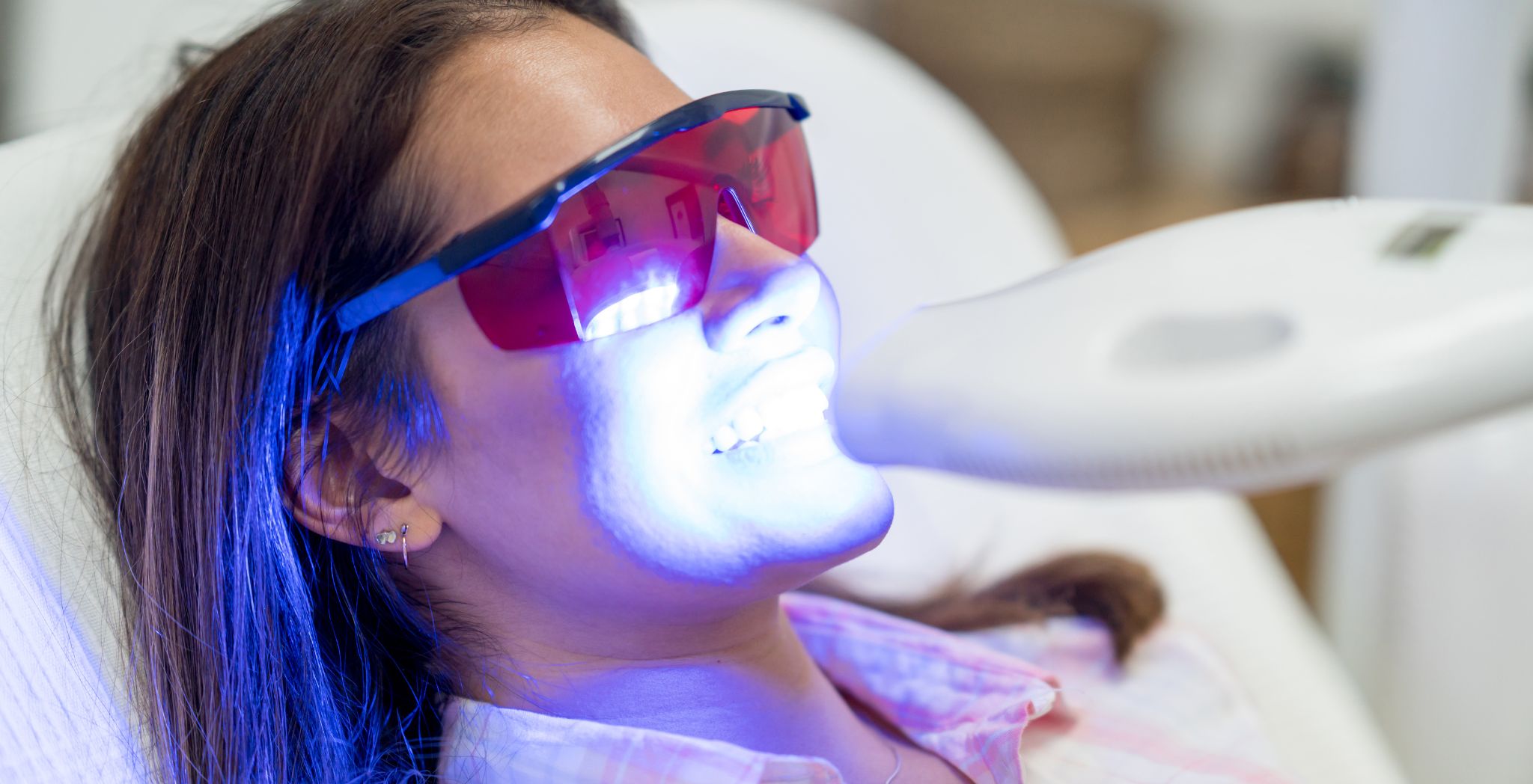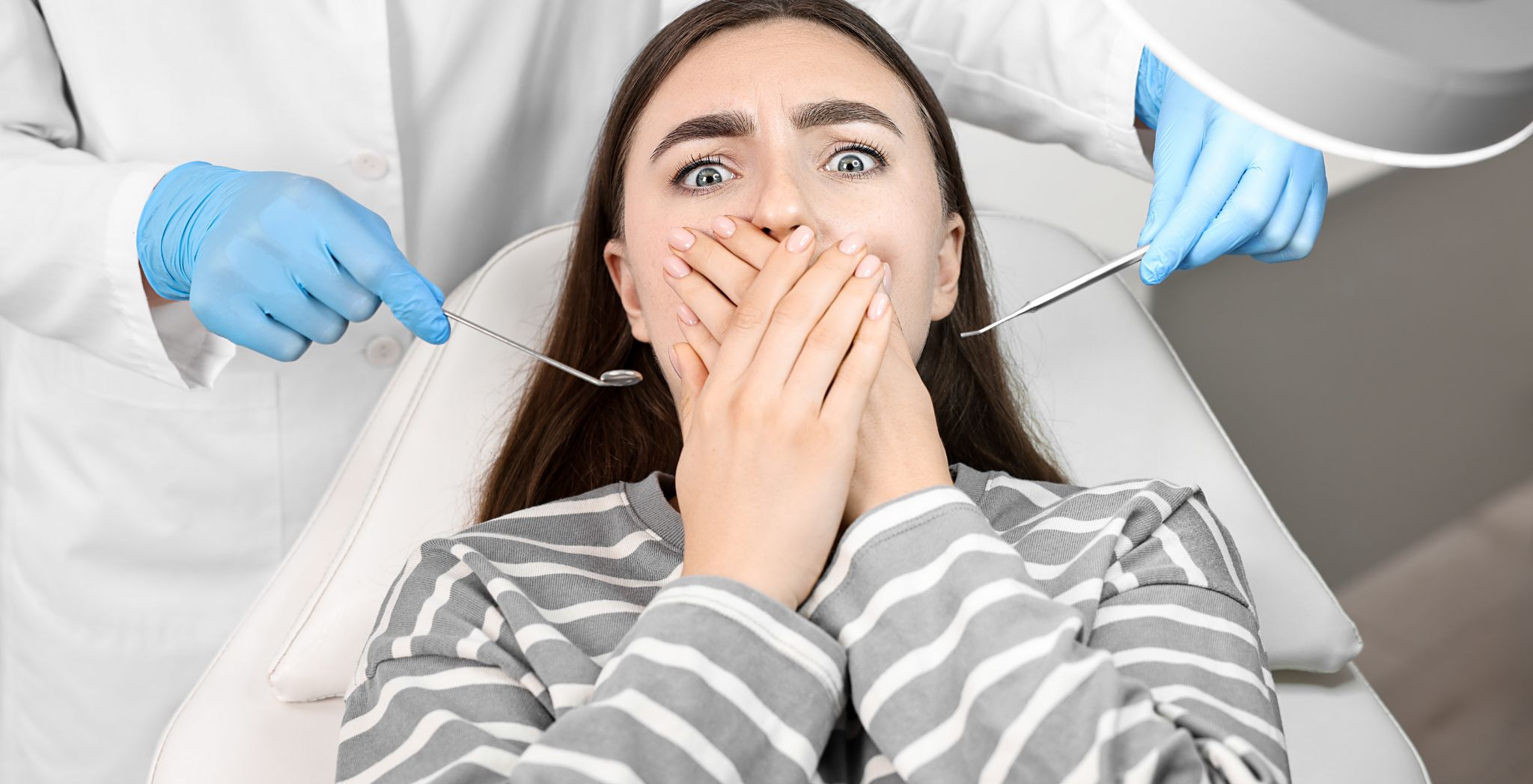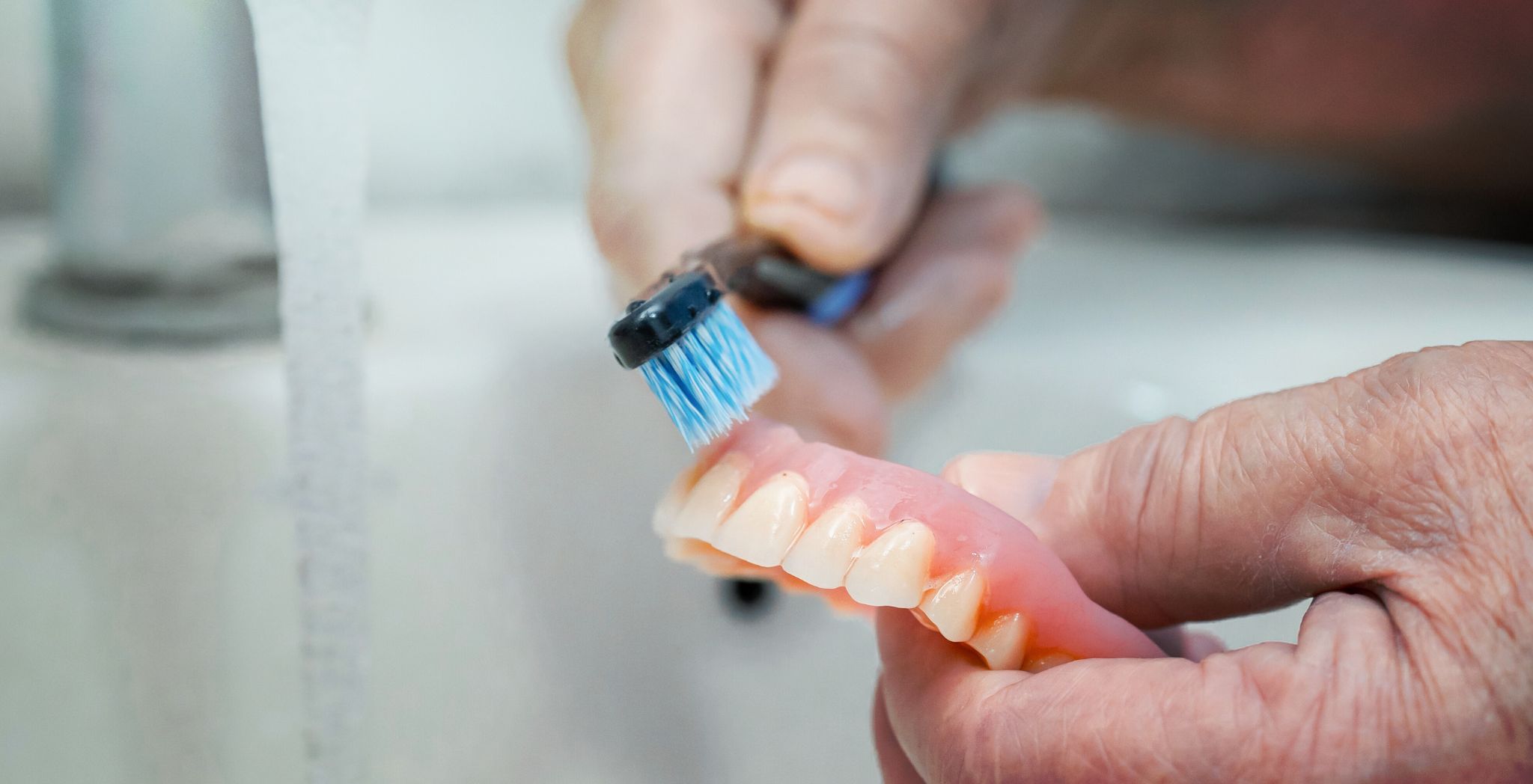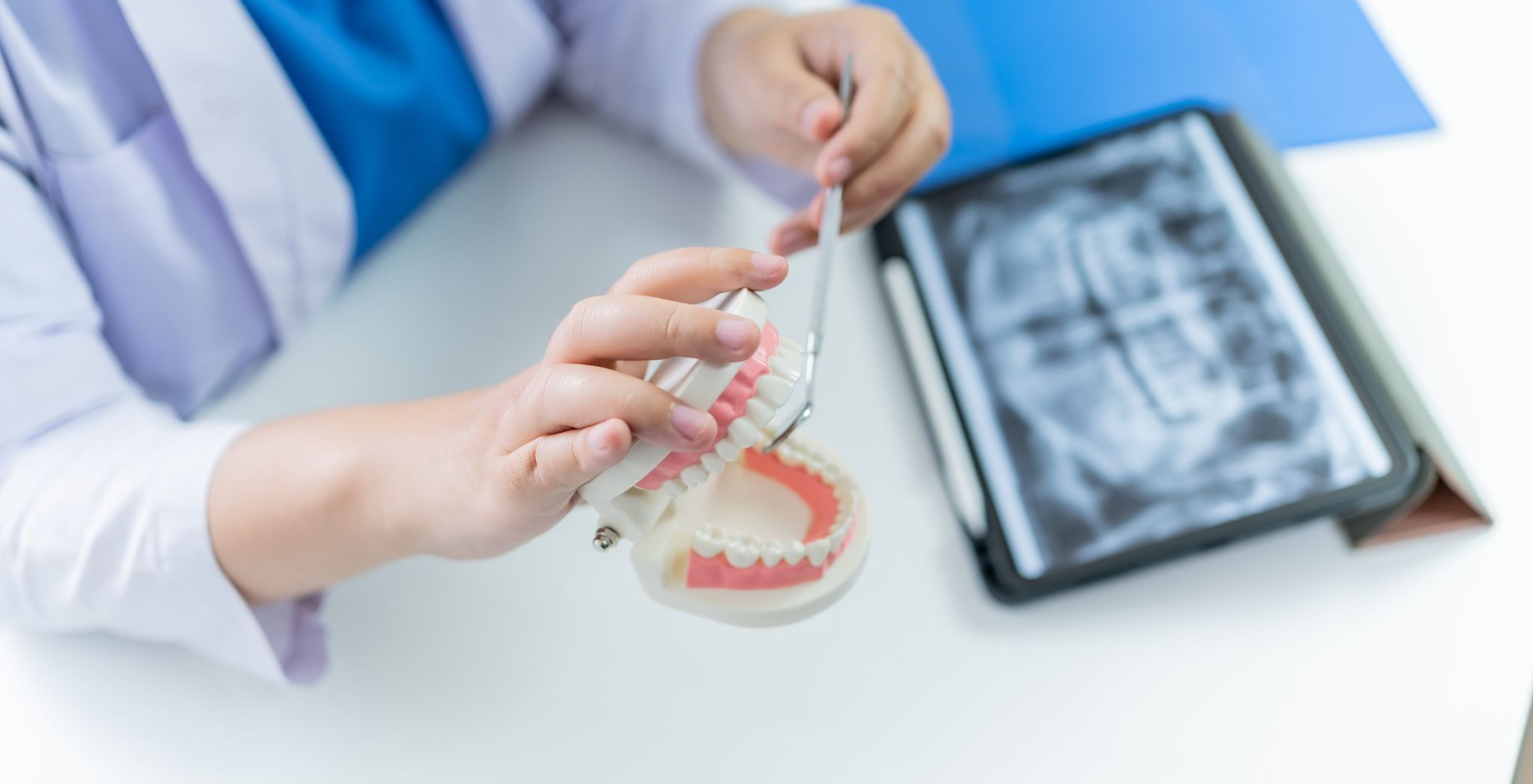Ever looked in the mirror and wished your smile had a little more sparkle? You’re definitely not alone! Just like wanting a brighter screen on your phone or a more vibrant colour in your favourite painting, a whiter smile is something many people desire. It can boost your confidence, make you feel more approachable, and simply make you happier with your overall appearance.
Think of your teeth like a favourite white t-shirt. Over time, that shirt might pick up stains from coffee spills, that delicious pasta sauce, or even just from being worn and washed repeatedly. Our teeth are similar! They encounter all sorts of things that can dull their natural brightness, from the dark liquids we enjoy to the natural aging process.
That’s where teeth whitening comes in! It’s like giving your smile a refreshing cleanse, helping to lift those unwanted stains and reveal a brighter, more radiant you. This blog is your friendly guide to understanding the teeth whitening process. We’ll break down what it is, how you can do it, what happens during the process, and what you can expect along the way. So, get ready to learn how you can unlock your brightest smile!
Diving into the World of Teeth Whitening
Teeth whitening, at its core, is a process that aims to lighten the colour of your teeth. It works by using certain chemicals that break down stains on and within the enamel, which is the hard outer layer of your teeth. Imagine those chemicals as tiny scrubbers gently lifting away the discolouration.
It’s important to understand that “whiteness” isn’t a one-size-fits-all concept. Everyone’s teeth have a natural shade, and what looks “white” varies from person to person. Teeth whitening aims to bring your teeth to a lighter shade within their natural range, making them appear brighter and more vibrant.
Think of it like choosing a lighter shade of paint for a room. You’re not necessarily making it pure white, but you’re selecting a shade that looks cleaner, fresher, and more appealing.
Exploring the Different Paths to a Brighter Smile: Types of Teeth Whitening
Just like there are different ways to cook a meal (baking, frying, grilling!), there are different methods available for teeth whitening. Each has its approach, strength, and convenience factor. Let’s explore some of the most common types:
1. Professional Teeth Whitening (The Dentist’s Expertise):
Imagine going to a professional artist to get a painting restored. They have the specialised tools, knowledge, and experience to achieve the best possible results. Professional teeth whitening, done at your dentist’s office (like your friendly narre warren dental clinic), is similar.
- In-Office Whitening: This is often the most powerful and fastest way to whiten your teeth. Your dentist will apply a high-concentration whitening gel to your teeth while protecting your gums and soft tissues. Sometimes, a special light or laser is used to activate the gel and speed up the process. Think of it like a supercharged whitening session, often completed in one or a few visits. The Zoom whitening process and Zoom teeth whitening procedure are popular examples of this in-office treatment, known for their effectiveness and relatively quick results.
- Custom Take-Home Kits: Your dentist can create custom-fitted trays that perfectly mould your teeth. They’ll provide you with a professional-strength whitening gel and instructions on how long and often to wear the trays. This method offers more gradual whitening at your convenience, like having your personalised whitening routine at home.
Why choose professional whitening? Dentists can assess your teeth and recommend the best teeth whitening process for your specific needs and the type of stains you have. They use stronger whitening agents that are safe and effective under their supervision, leading to noticeable and often faster results. The best professional teeth whitening process often involves in-office treatments for maximum impact.
2. Over-the-Counter (OTC) Whitening Products (Your At-Home Options):
These are the whitening products you can find at your local pharmacy or supermarket, like those paint-at-home kits. They offer more convenience and affordability but generally have lower concentrations of whitening agents compared to professional options.
- Whitening Strips: These are thin, flexible plastic strips coated with a whitening gel. You apply them to your teeth for a specific amount of time each day. Think of them as temporary stickers that deliver a whitening boost.
- Whitening Toothpaste: This contains mild abrasives and chemicals that help remove surface stains. They are suitable for maintaining brightness after a professional treatment or very mild staining. Think of them as a daily polish for your smile.
- Whitening Mouthwashes: These rinses contain whitening agents but typically have a shorter contact time with your teeth, making them less effective for significant whitening. They can help with surface stains and freshen your breath.
- Whitening Gels with Trays: These kits come with generic, one-size-fits-all trays and a whitening gel. They are less customised than dentist-provided trays, which can sometimes lead to less consistent results and potential gum irritation if the tray doesn’t fit well.
Important Note: While OTC products can offer some improvement, they might not be as effective for deeper or more stubborn stains. It’s always a good idea to talk to your dentist before using any whitening products, especially if you have sensitive teeth or existing dental issues.
Unveiling the Steps: What Happens During the Teeth Whitening Process
Whether professional or at-home whitening, the fundamental process involves breaking down stains. Here’s a closer look at what typically happens:
1. Consultation and Assessment:
- Professional: Your dentist will examine your teeth and gums to ensure they are healthy for whitening. They’ll discuss your goals, assess the type and severity of stains, and recommend the most suitable treatment plan. This step is like a painter carefully examining a canvas before starting their work.
- At-Home: You’ll need to read the product instructions carefully and ensure you don’t have any open sores or significant gum issues.
2. Preparation:
- Professional: Your dentist will protect your gums and lips using barriers or gels, leaving only your teeth exposed. This is like a painter masking off areas they don’t want to paint.
- At-Home: You’ll follow the instructions provided with your chosen product, ensuring your teeth are clean and dry before application.
3. Application of Whitening Agent:
- Professional: A high-concentration hydrogen peroxide or carbamide peroxide gel is carefully applied to the surface of your teeth. The strength of the gel is much higher than in OTC products. Sometimes, a special light or laser is used to activate the gel, which helps it penetrate the enamel and break down stains faster. Think of the light as a catalyst that speeds up the cleaning reaction.
- At-Home: You’ll apply the whitening strips gel in trays or use the toothpaste or mouthwash as directed. The concentration of the whitening agent is lower, so the process usually takes longer to see results.
4. The Whitening Action:
The active ingredient in most whitening products, hydrogen peroxide or carbamide peroxide, works by oxidation. These molecules break down the stain molecules into smaller, colourless molecules. Imagine the stain molecules as large, dark clusters that are broken apart into tiny, invisible pieces. This process happens both on the surface of your teeth and within the enamel.
5. Rinsing and Cleaning:
- Professional: After the designated time, the whitening gel is removed, and your mouth is thoroughly rinsed.
- At-Home: You’ll remove the strips or trays and rinse your mouth as instructed.
6. Post-Whitening Care:
- Professional: Your dentist might apply a fluoride treatment to help reduce sensitivity and strengthen your enamel. They’ll also give you instructions on how to maintain your brighter smile.
- At-Home: You’ll typically be advised to avoid staining foods and drinks for a specific period.
Is it Safe, and Does it Really Work? The Safety and Effectiveness of Teeth Whitening
Teeth whitening is generally considered safe when done correctly. However, like any procedure, there can be potential side effects, and effectiveness can vary.
Safety:
- Sensitivity: Temporary tooth sensitivity is a common side effect, especially with stronger whitening agents. This usually subsides within a few days. Using toothpaste designed for sensitive teeth can help.
- Gum Irritation: If the whitening gel comes into contact with your gums, it can cause temporary irritation or redness. This is more likely with ill-fitting at-home trays. Professional whitening minimises this risk with protective barriers.
- Enamel Damage: When used excessively or improperly, whitening products could potentially weaken enamel. This is why following instructions carefully and consulting with your dentist is crucial.
Effectiveness:
- Type of Stains: Whitening is most effective on extrinsic (surface stains) caused by food, drinks, and tobacco. Intrinsic stains (stains within the tooth structure) caused by certain medications, trauma, or excessive fluoride can be more challenging and require different approaches like veneers or bonding.
- Concentration of Whitening Agent: Professional treatments use higher concentrations, leading to more noticeable and often faster results.
- Application and Duration: Following the instructions for at-home products is essential for optimal results. Consistency is key.
- Individual Response: Just like people respond differently to medications, individuals may experience varying degrees of whitening.
The Verdict: Teeth whitening can be a safe and effective way to brighten your smile when done correctly. Consulting with your dentist is the best way to ensure safety and achieve the desired results. They can assess your individual needs and recommend the best teeth whitening process for you.
The Grand Finale: Results and How Long That Brightness Lasts
Ah, the million-dollar question: how white will my teeth get, and how long will it last?
Results:
The degree of whitening you can achieve depends on several factors, including:
- Initial Shade of Your Teeth: Severely stained teeth might require multiple treatments for a significant difference.
- Type and Concentration of Whitening Agent: Professional treatments generally offer more dramatic results.
- Duration and Frequency of Treatment: Following the recommended treatment schedule is crucial.
- Individual Tooth Structure and Response: Some teeth naturally respond better to whitening than others.
You can expect to see a noticeable difference in the brightness of your smile after a whitening treatment. Many people experience several shades of improvement. Your dentist like dentist berwick can often show you a shade guide to help you visualise potential results.
Longevity:
Unfortunately, teeth whitening isn’t permanent. Just like that white t-shirt can get stained again, your teeth will naturally pick up new stains over time. However, you can take steps to prolong your brighter smile:
- Good Oral Hygiene: Brushing twice daily, flossing daily, and whitening toothpaste can help remove surface stains and maintain brightness.
- Avoid Staining Foods and Drinks: Limit your consumption of coffee, tea, red wine, cola, and other dark-coloured substances. If you do indulge, rinse your mouth with water afterward.
- Quit Smoking: Tobacco is a major culprit in tooth staining.
- Regular Dental Checkups and Cleanings: Professional cleanings remove plaque and tartar buildup, which can contribute to staining.
- Touch-Up Treatments: Your dentist may recommend occasional touch-up whitening treatments to maintain your desired shade. Using a custom take-home kit, you can often purchase additional whitening gel for maintenance.
Think of maintaining your white smile like maintaining a white car. Regular washing and avoiding muddy roads will keep it looking its best for longer!
Conclusion: Embracing Your Brighter Smile Journey
Teeth whitening is a popular and effective way to enhance your smile and boost your confidence. Understanding the different types of treatments, the process involved, and the importance of safety and maintenance empowers you to make informed decisions.
Whether you opt for the speed and power of professional in-office whitening like the Zoom whitening process, the convenience of a custom take-home kit from your dentist (perhaps your trusted dentist in Berwick or Narre Warren dental professional), or the gradual approach of over-the-counter products, a brighter smile is within reach.
Remember that consulting with your dentist is always the first and most important step. They can guide you towards the best teeth whitening process for your needs and help you achieve a smile that truly shines. So, take that step, explore your options, and get ready to unveil a more radiant and confident you!



